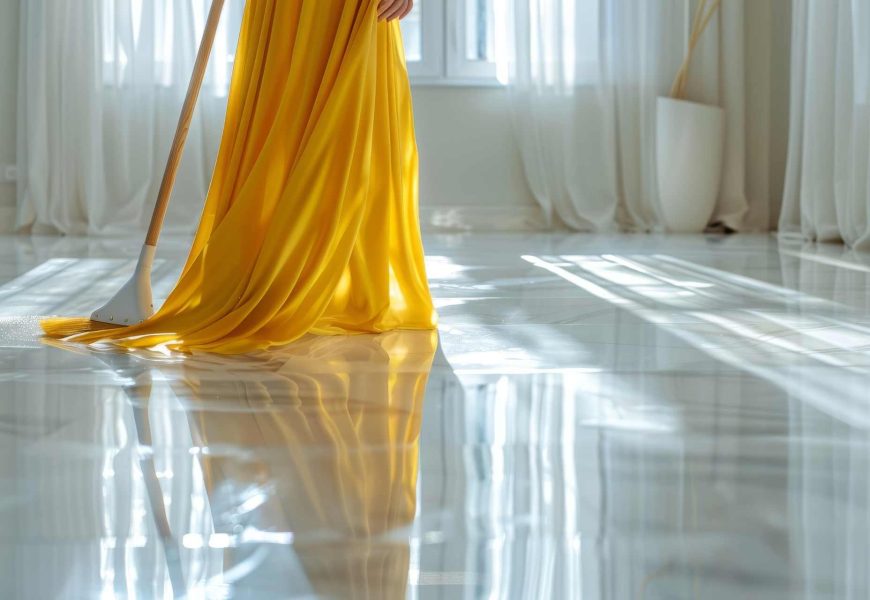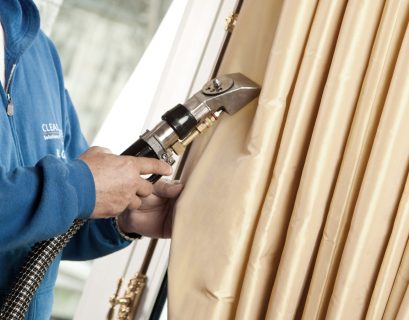In the bustling urban landscape of Brooklyn, where historic brownstones and modern apartments blend seamlessly, indoor air quality is a critical concern for residents, especially those battling allergies. Drapery cleaning might seem like a mundane household task, but for allergy sufferers, it’s a crucial health intervention that can dramatically improve daily life and well-being.
The Hidden Allergen Reservoir: Understanding Drapery Contamination
Draperies are more than just decorative elements in our homes; they are complex textile surfaces that act like sophisticated dust and allergen traps. Unlike smooth surfaces that can be easily wiped clean, fabric curtains and drapes have intricate weaves that provide numerous microscopic spaces for allergens to nestle and accumulate.
Dust mites, pet dander, pollen, and other microscopic particles gradually build up in drapery fibers over time. These allergens become embedded deep within the fabric, creating a persistent source of respiratory irritation. Each time curtains are moved or a breeze passes through, these trapped particles can be released into the air, triggering allergic reactions and respiratory distress.
The Science Behind Allergen Accumulation in Draperies
Scientific research has demonstrated the remarkable ability of textile surfaces to collect and retain allergens. A single square meter of drapery can harbor thousands of dust mites, along with their waste particles, which are primary triggers for allergic reactions. The complex molecular structure of fabric provides numerous binding sites for these microscopic irritants.
Protein-based allergens from pet hair, human skin cells, and external environmental sources adhere readily to fabric fibers. These proteins have complex molecular structures that allow them to create strong bonds with textile materials, making them exceptionally difficult to remove through casual cleaning methods.
Health Implications of Unclean Draperies for Allergy Sufferers
For individuals with allergies, asthma, or respiratory sensitivities, contaminated draperies can transform living spaces from comfortable sanctuaries into potential health hazards. Continuous exposure to accumulated allergens can lead to persistent symptoms such as:
- Chronic nasal congestion
- Recurring respiratory infections
- Increased asthma attack frequency
- Persistent eye irritation
- Skin rashes and eczema flare-ups
The cumulative effect of these ongoing exposures can significantly diminish an individual’s quality of life, leading to reduced productivity, disrupted sleep patterns, and increased medical expenses.
Professional Drapery Cleaning Techniques in Brooklyn
Brooklyn’s professional drapery cleaning service has developed sophisticated techniques specifically designed to address comprehensive allergen removal. These methods go far beyond standard home cleaning approaches, utilizing advanced technologies and specialized cleaning agents.
High-temperature steam cleaning penetrates fabric fibers, effectively destroying dust mite populations and denaturing protein-based allergens. Specialized HEPA-filtered vacuum systems extract microscopic particles without reintroducing them into the environment, ensuring a thorough cleansing process.
The Economic and Environmental Considerations
Investing in professional drapery cleaning is not merely a health decision but also an economically and environmentally responsible choice. Regular professional cleaning extends the lifespan of draperies, preventing premature fabric degradation and reducing the need for frequent replacements.
Moreover, by maintaining clean draperies, homeowners can improve their indoor air quality, potentially reducing energy costs associated with air purification systems and minimizing healthcare expenses related to allergy management.
Customized Cleaning Approaches for Different Fabric Types
Brooklyn’s diverse architectural landscape means draperies come in numerous fabric compositions, each requiring a nuanced cleaning approach. Professional services understand the delicate nature of different textiles, from delicate silk to robust cotton blends.
Specialized cleaning protocols are developed considering factors like fabric weight, weave density, color fastness, and potential sensitivity to cleaning agents. This tailored approach ensures both comprehensive allergen removal and fabric preservation.
Preventative Maintenance Strategies
Beyond periodic deep cleaning, implementing preventative maintenance strategies can significantly reduce allergen accumulation. These strategies include:
- Regular light vacuuming using HEPA-filtered equipment
- Maintaining optimal indoor humidity levels
- Using protective drapery linings
- Implementing periodic professional cleaning schedules
Long-Term Health Benefits and Quality of Life Improvement
Consistent professional drapery cleaning represents a proactive approach to managing indoor environmental health. By systematically reducing allergen loads, individuals can experience tangible improvements in respiratory function, sleep quality, and overall well-being.
Many allergy sufferers report substantial reductions in medication dependency and fewer symptomatic episodes after implementing rigorous drapery cleaning protocols.
Conclusion: An Investment in Health
For Brooklyn residents battling allergies, professional drapery cleaning transcends a simple household maintenance task. It represents a strategic health intervention, transforming living spaces into cleaner, more breathable environments.
By understanding the complex interactions between fabric surfaces and allergens, individuals can make informed decisions that prioritize their respiratory health and overall quality of life.
Frequently Asked Questions
- How often should draperies be professionally cleaned? For allergy sufferers, professional cleaning is recommended every 6-12 months, depending on environmental factors and individual sensitivity levels.
- Are professional drapery cleaning services expensive? Costs vary based on fabric type and room dimensions, but they are generally comparable to other home maintenance services, with prices typically ranging from $100-$300 per treatment.
- Can I clean my draperies myself? While light maintenance is possible, professional services offer deep cleaning capabilities that home methods cannot match, particularly for comprehensive allergen removal.
- How long does a professional drapery cleaning session take? Most professional cleaning sessions for residential draperies take approximately 2-3 hours, including careful removal, cleaning, and reinstallation.
- Will professional cleaning damage my draperies? Reputable Brooklyn cleaning services use specialized techniques designed to clean thoroughly while preserving fabric integrity, minimizing the risk of damage.
Also read: Why Regular Carpet Cleaning is Important for Brooklyn Homeowners










